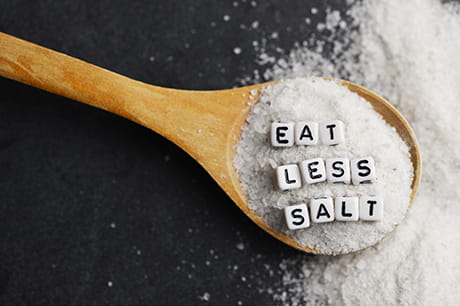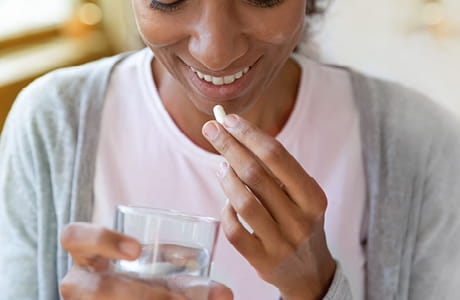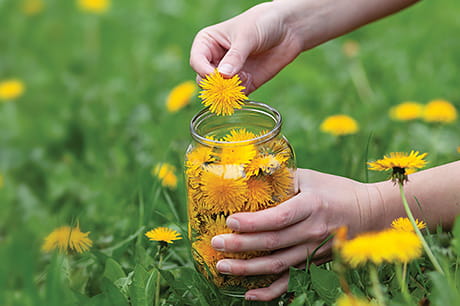How much sodium is in your diet? You might be surprised
Sodium is everywhere, in foods you might not expect.
On a Friday night, Chinese takeout and maybe some popcorn as you watch the latest new release might sound great.
Before you enjoy a few salty snacks, it’s worth considering how much salt you consume in a day.
Think your diet may have too much sodium? Good news: With a few minor adjustments, you can eat less.
What is sodium?
Sodium is an essential nutrient. Acting as both a mineral and an electrolyte, it keeps your body in balance by helping to:
- Maintain nerve and muscle function
- Balance water in the body
And although sodium plays an integral role in helping your body function, getting too much sodium can upset that balance.
How much sodium you actually need
So, how much sodium do you need in a day?
“If you’re a healthy adult, aim for no more than 2,300 milligrams for your daily amount of sodium,” says Dr. Michael Lesko, chief of cardiology for Geisinger’s western region.
More than 2,000 of anything may sound like a lot. In reality, it’s only about a teaspoon. Many of us eat too much, and it’s easy to do. Sodium lurks in places you might not expect, like frozen vegetables, breads and even tea bags. So stopping excess salt in its tracks requires a bit of sleuthing.
But cutting back on salt, even slightly, earns you big dividends. Reducing your salt intake can help:
- Lower blood pressure
- Protect your bones
- Reduce joint inflammation
- Banish belly bloat
Eating less salt? Challenge accepted
With salt seemingly everywhere, try not to lose track of how much you’re really eating. A few simple ways to get less salt in your day:
- Check labels. Not sure how much salt is in a particular food? Start by scanning the label. You might be surprised at what you see. Just because a label says “no added salt” or “unsalted” doesn’t mean it’s low in sodium. That’s why it’s important to do your homework. “Stick to foods with less than 400 mg of sodium per serving,” Dr. Lesko says.
- Eat fresh. Want an easier way to limit salt? Cook with fresh ingredients where possible. “By cooking meals yourself, you can control the amount of sodium your dish has,” says Dr. Lesko. Make a trip to your local farmers market or your regular grocery store to pick up what you need. Then head to the kitchen and get cooking.
- Scan the menu. Eating less salt doesn’t mean you have to give up going out to eat. Before heading to your favorite restaurant for a meal, browse the menu. This can give you an idea of what you want to order and help you identify lower-sodium dishes. When deciding on a dish, Dr. Lesko offers these suggestions:
- Ask if the kitchen can make your meal with less or no salt
- Request sauce on the side
- Choose grilled meats or fish
- Swap fries for steamed vegetables
- Pay attention to snacks. When cravings hit, sometimes only a salty snack will do. Our favorite crunchy, munchy snacks may hit the spot, but they’re often packed with sodium. So, what’s a hungry person to do at snack time? Instead of reaching for the chips or pretzels, quash your craving with unsalted almonds or colorful raw vegetables.
- Cut back on processed food. Pre-packaged or processed foods are often the highest in sodium. And many of them don’t taste salty, making it harder to judge their sodium content. Check your pantry for these items and swap where possible:
- Canned soup
- Pre-packaged side dishes, like rice or pasta
- Condiments and salad dressing
- Cured meat, like sausages, hot dogs and cold cuts
- Frozen meals
And if you do need to eat non-perishable items, look for ones that say “low or no sodium’” on the label.
- Try other seasonings. You don’t have to eat bland, unseasoned dishes if you’re watching your sodium. There’s a plethora of flavor waiting in your spice rack to help you kick it up a notch. Consider replacing salt with these tasty alternatives:
- Garlic
- Sodium-free spice blends
- Fresh herbs
- Onion powder
- Citrus juices
- Flavor-infused oils or vinegar
- Smoked paprika
- Za’atar
Start slow
When you’re ready to reduce the sodium in your diet, start slow. Whether you use different seasonings or eat less processed food, choose one slight adjustment to make and stick with it. Gradual changes over time can make a significant impact.
If you’re concerned about your food tasting bland, Dr. Lesko says, “Make adjustments slowly to give your taste buds the chance to get used to the change.”
And while your palate adjusts, have fun finding new seasonings and tastes you enjoy.
Next steps:
Meet Michael Lesko, DO
Want to keep an eye on your blood pressure at home? Here’s how
Plant-based meats: Are they better for you?





